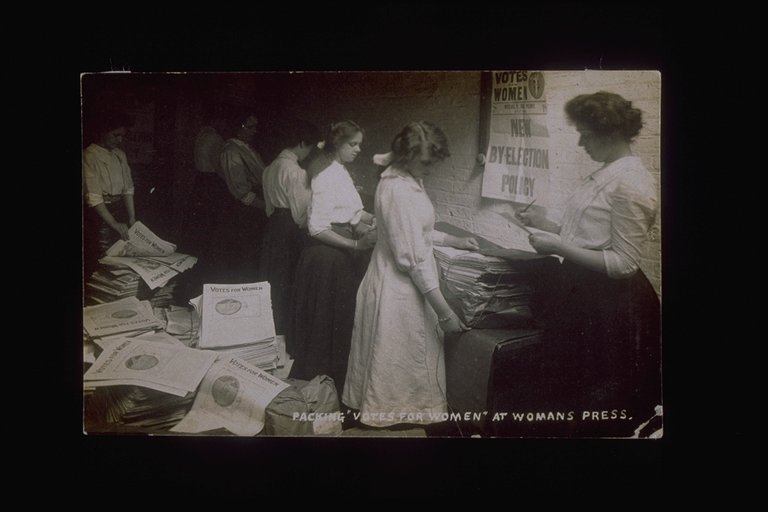About this object
-
Maker:
Searjeant, H.
-
ID:
50.82/928k
Production date:
1911
-
Location:
In Store
-
Packing and despatching Votes for Women at The Woman's Press, 156 Charing Cross Road, September 1911. Financed and edited by Emmeline and Fred Pethick-Lawrence Votes for Women was first published in October 1907 as a monthly publication and quickly became the official voice of the Women's Social & Political Union. The newspaper as printed by St Clement's Press located close to WSPU headquarters. From April 1908 Votes for Women became a weekly publication on sale every Thursday and was widely available at WSPU branch shops and retail newsagents including W.H.Smith and John Menzies. Many copies were also sold by brave Suffragette street sellers at risk of heckling from hostile members of the public. Behind the editing, publishing and printing of the newspaper was a highly organised team of both salaried and volunteer staff who used the most up-to date printing, publishing and distribution practices and equipment. Regular features in the newspaper included a diary of WSPU activities throughout the country and progress reports on the campaign. By July 1909 Votes for Women reported a weekly circulation of 50,000. This achievement was reported in the 9th July edition of the newspaper that also noted that, in London, the Kensington WSPU branch led the way with sales of 1,300 copies the previous week being sold either in the shop or by local volunteer street sellers. Other London branches recorded on average the sale of 500-600 copies for that week.
< ...Read more -
Measurements
H 87 mm; W 138 mm
-
Materials
card; ink
-
Last Updated
2024-03-14
Record quality:
Not every record in Collections Online is complete. Some have low quality images designed purely for recognition, while some have been catalogued only to a basic standard. This graphic is designed to give you an impression of the quality of data you can see. 100% meets all our current data standards and has a high quality image, 20% is a basic record with no image. Individual record quality can change over time as new photography is carried out and records are worked on.
X








